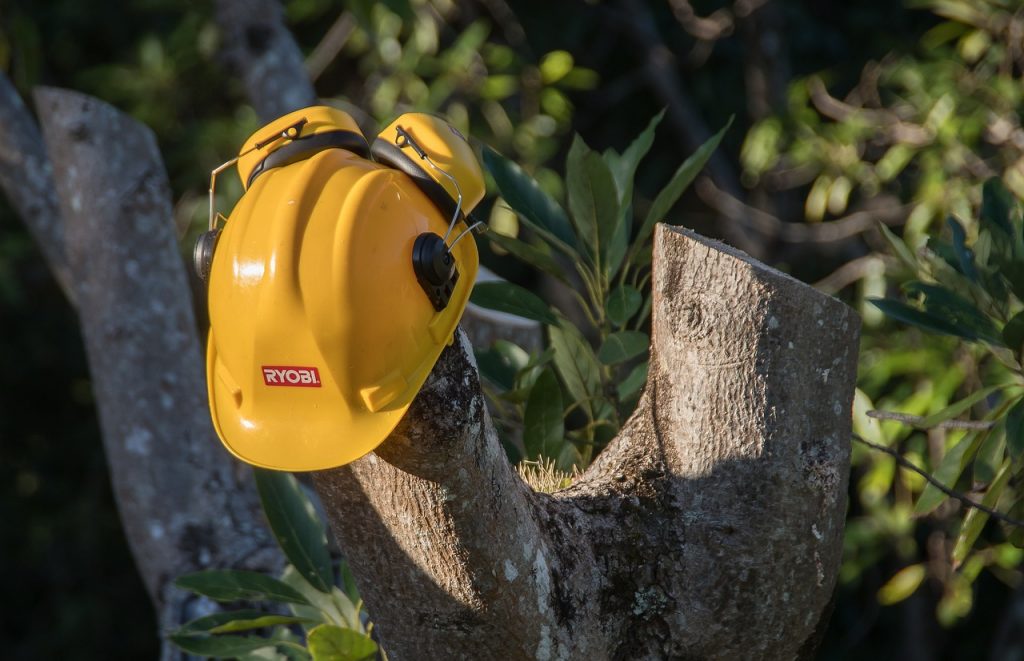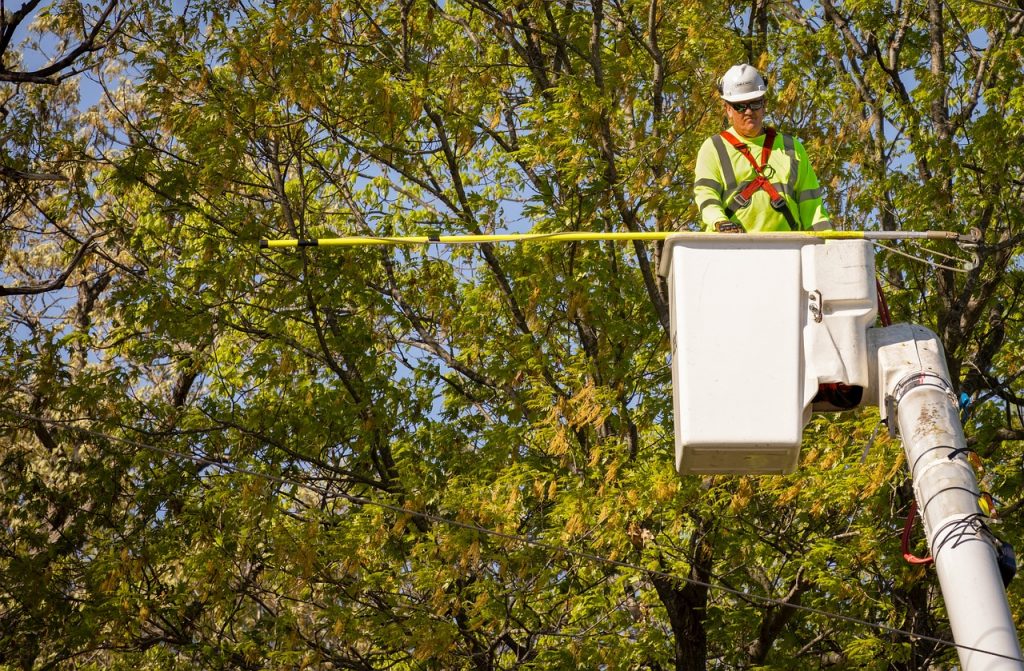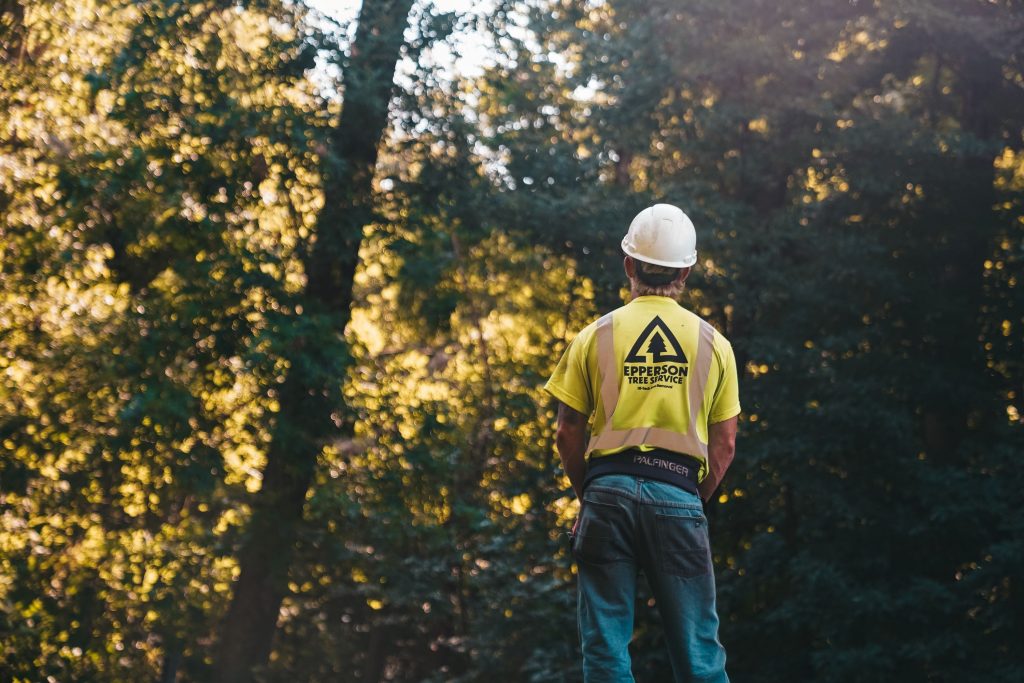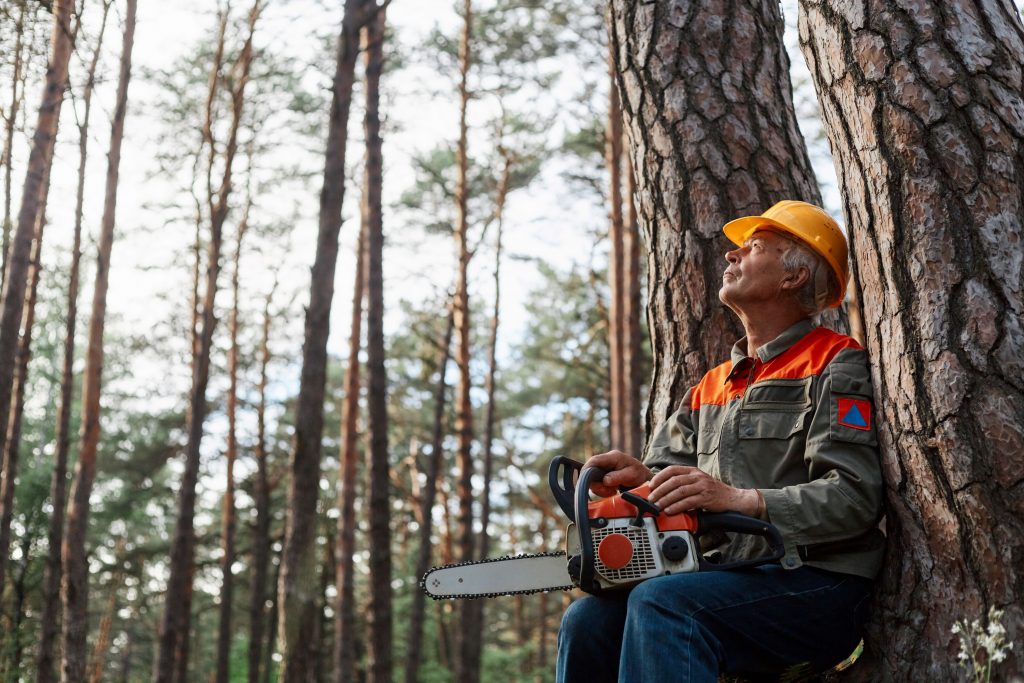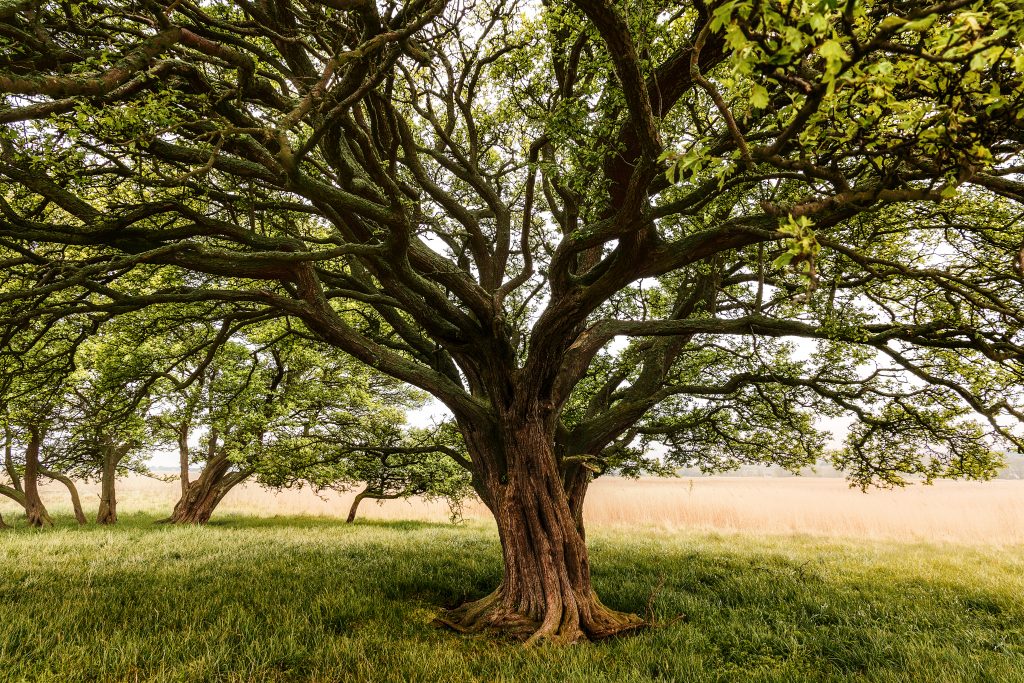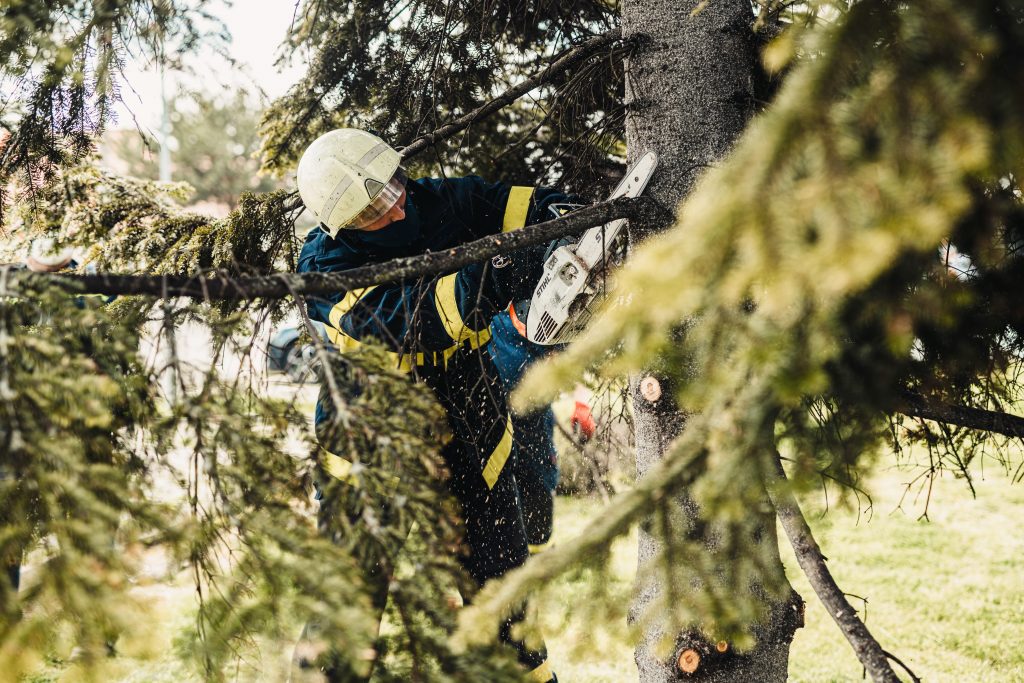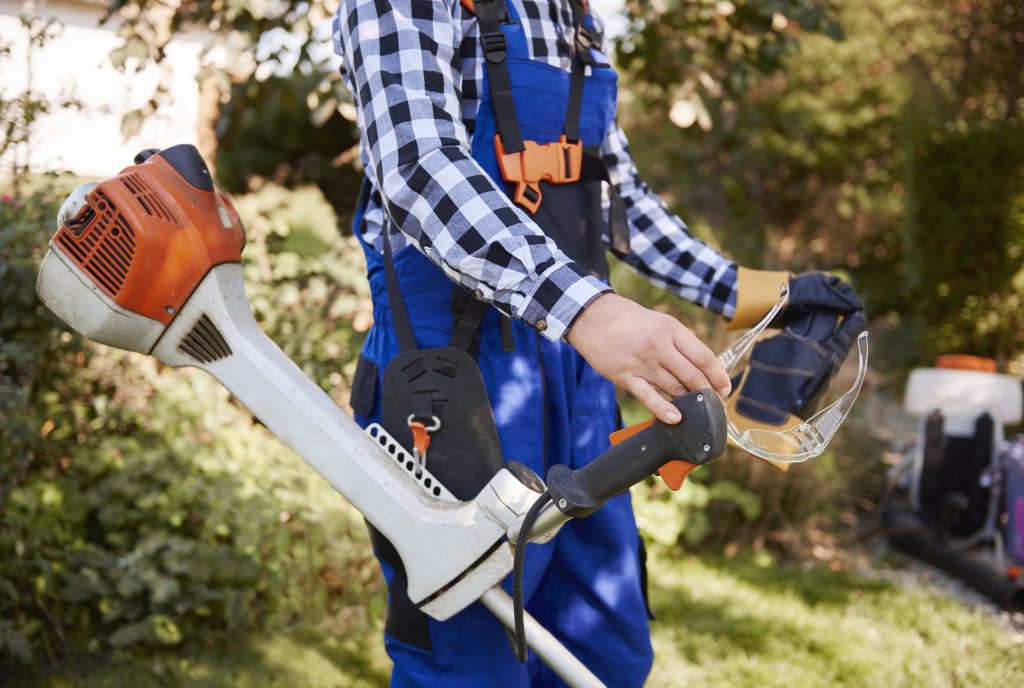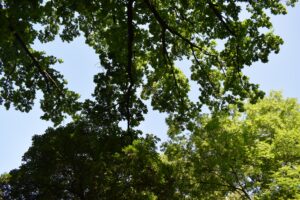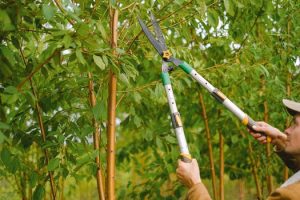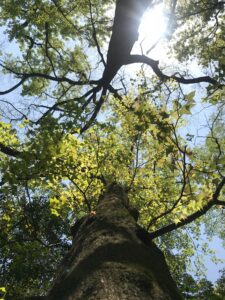What to Do After Tree Removal?
What to Do After Tree Removal?
Imagine standing in your yard, looking at the empty space where a once majestic tree stood. Like a missing puzzle piece, it’s gone, leaving you wondering what to do next. Don’t fret, because this article will guide you through the post-tree removal process. From tips on how to care for the remaining landscape to mistakes to avoid, we’ll provide you with the knowledge and steps necessary to ensure a smooth transition after removing a tree.
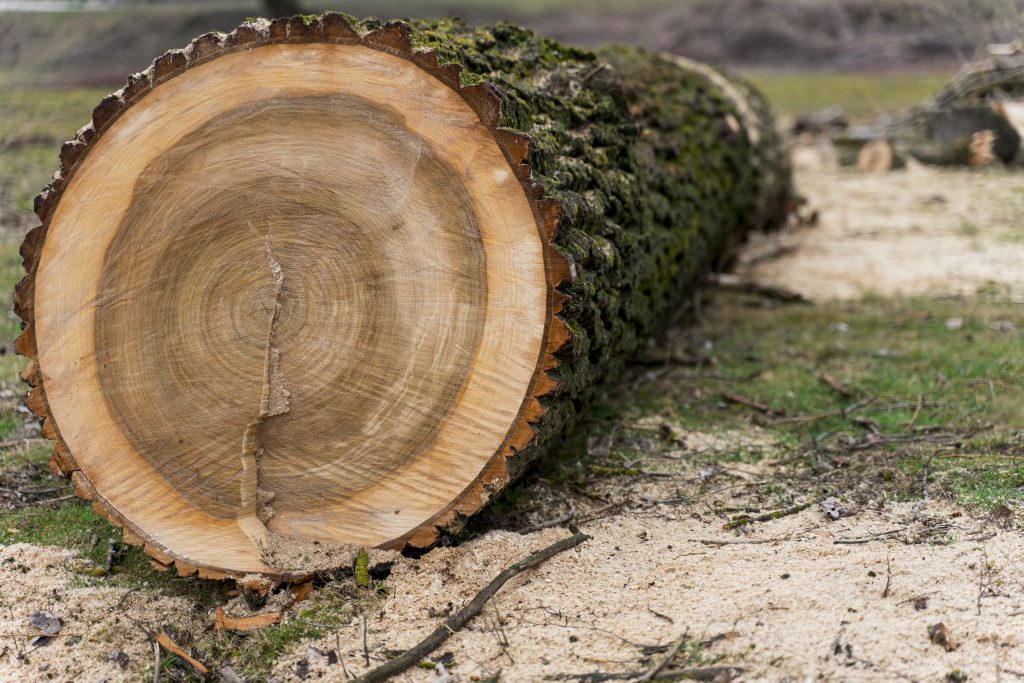
Key Takeaways
- Hiring professional tree removal services is important for the safety and efficiency of the removal process.
- Tree stump disposal can be done through stump grinding or natural decay methods, both of which have their own benefits.
- Soil restoration techniques, such as using organic compost or fertilizers, help improve soil quality and promote healthy plant growth.
- When planting new trees, it is crucial to consider factors like sunlight, drainage, soil conditions, and the specific needs of the tree species to ensure their successful integration into the landscape.
Introduction to Tree Removal Process
Now that you’ve decided to remove a tree, let’s talk about the process involved. Tree removal is not a simple task and requires careful planning and execution. To ensure a successful tree removal, it is highly recommended to hire professional tree removal services. Here’s why:
- History of tree removal techniques: Over the years, tree removal techniques have evolved significantly. In the past, manual methods such as axes and saws were used, which were time-consuming and physically demanding. However, with advancements in technology, modern techniques like tree climbing, aerial lifts, and cranes are now used, making the process more efficient and safe.
- Benefits of professional tree removal services: Hiring professionals for tree removal offers numerous benefits. Firstly, they have the necessary knowledge and experience to assess the tree’s condition, identify potential risks, and determine the best approach for removal. Additionally, professionals have the proper tools and equipment, ensuring a smooth and efficient process. Moreover, they follow safety protocols and have insurance coverage, providing peace of mind and protection against any accidents or damages that may occur during the removal.
Now that you understand the importance of professional tree removal services, let’s delve into the fascinating history of tree removal equipment.
History of Tree Removal Equipment
To learn about the history of equipment used for removing trees, you can explore how technology has evolved over time. Tree removal equipment has come a long way, with advancements that have made the process more efficient and less harmful to the environment.
In the past, tree removal techniques often involved manual labor, such as using axes and saws to cut down trees. This method was time-consuming and physically demanding. However, as technology progressed, so did the equipment used for tree removal. Chainsaws were introduced, making the process faster and easier.
Today, there are even more advanced tools available for tree removal. Hydraulic equipment, such as cranes and bucket trucks, allow for the safe and precise removal of trees. These machines can reach high branches and limbs, reducing the need for climbing and minimizing the risk of accidents.
While the advancements in tree removal equipment have made the process more efficient, it is important to consider the environmental impact. Clearing large areas of trees can disrupt ecosystems and contribute to deforestation. Therefore, it is crucial to use sustainable tree removal techniques and replant trees whenever possible.
With the evolution of tree removal equipment, professionals can now remove trees more effectively and with less damage to the environment. Next, we will provide tips on what to do after tree removal to ensure a smooth transition for your property.
Tips
When it comes to tree stump disposal, there are a few options you can consider. One popular method is stump grinding, where a machine is used to grind the stump into small wood chips. Another option is stump removal, which involves digging out the entire stump and its roots. Once the stump is taken care of, it’s important to focus on soil restoration techniques to ensure the health of your garden or landscape. This can include adding compost, mulch, or other organic materials to improve the soil’s fertility and structure. Finally, planting new trees is an essential step in maintaining a vibrant and healthy environment. Consider factors such as the type of tree, its location, and proper planting techniques to ensure the success of your new tree.
Tree Stump Disposal
After tree removal, it’s important to consider the best method for tree stump disposal. One effective method is tree stump grinding, which involves using a specialized machine to grind the stump into small wood chips. This method is quick, efficient, and eliminates the need for extensive digging or manual labor. Another option is to let nature take its course through natural decay methods. This involves leaving the stump in place and allowing fungi and bacteria to break it down over time. While this method is less immediate, it can be a more environmentally friendly option. Once the tree stump has been disposed of, you can transition into the subsequent section about soil restoration techniques to ensure the area is ready for future landscaping or planting.
Soil Restoration Techniques
You can use organic compost or fertilizers to improve the quality of the soil after removing a tree stump. Soil restoration is crucial to prevent soil erosion and ensure the healthy growth of new plants. Organic fertilizers, such as compost, are an excellent choice as they enrich the soil with essential nutrients and improve its structure. Compost is made from decomposed organic matter, like leaves, grass clippings, and kitchen scraps. It increases the soil’s organic matter content, enhancing its ability to retain water and nutrients. By incorporating compost into the soil around the stump area, you can replenish its nutrient levels and promote healthy microbial activity. This will create a fertile environment for your newly planted trees, ensuring their successful growth and development.
Planting New Trees
To ensure successful growth of your newly planted trees, it’s important to select a suitable location with adequate sunlight and well-drained soil. When considering replanting strategies, you need to choose the right tree for the specific conditions of your yard. Take into account factors such as soil pH, moisture levels, and the amount of sunlight the area receives. Selecting a tree that is well-suited to these conditions will greatly increase its chances of thriving. Additionally, consider the size and shape of the tree, as well as its growth rate, to ensure it fits well in your landscape and won’t cause any issues in the future. By carefully considering these factors, you can ensure that your newly planted trees will have the best possible start. Now, let’s explore the traits of professional tree removal services.
Traits of Professional Tree Removal Services
Professional tree removal services have the necessary skills and equipment to safely remove trees. When it comes to tree removal safety, it is crucial to hire professionals who have the expertise to handle the task. They understand the potential risks involved and take the necessary precautions to ensure a safe removal process. Additionally, professional tree removal services have the appropriate tools and equipment required for the job. They have access to specialized machinery, such as cranes and chippers, which helps them efficiently and safely remove trees of all sizes.
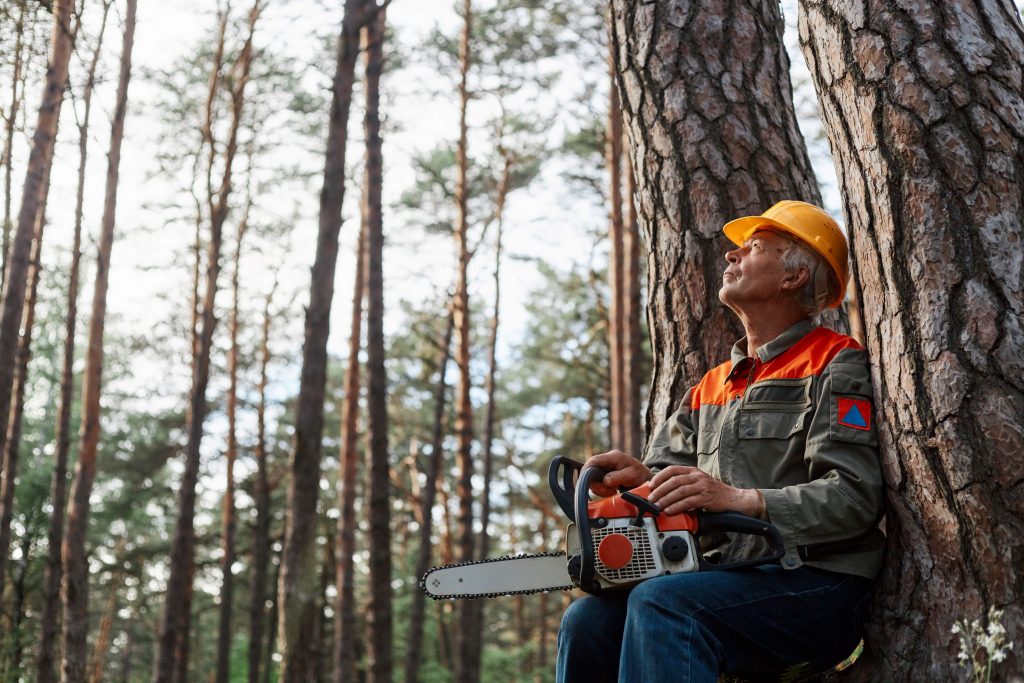
While the cost of tree removal may vary depending on several factors, such as the size and location of the tree, hiring professionals can actually save you money in the long run. Attempting to remove a tree on your own can be dangerous and may result in costly damages to your property or neighboring structures. Professional tree removal services not only have the skills to remove trees safely, but they also have insurance coverage that protects both them and you in case of any accidents or damages.
With the traits of professional tree removal services in mind, it is important to understand the steps for safe tree removal. These steps include assessing the tree’s condition, identifying potential hazards, planning the removal process, and executing it with precision. By following these steps, you can ensure a safe and successful tree removal experience.
Steps for Safe Tree Removal
When planning for safe tree removal, it’s important to first assess the condition of the tree and identify any potential hazards. This will help ensure that the tree removal process is carried out smoothly and without any accidents. Here are some steps to follow for safe tree removal:
- Inspect the tree: Carefully examine the tree to determine its overall health and structural integrity. Look for signs of decay, disease, or insect infestation that may compromise the tree’s stability.
- Identify potential hazards: Take note of any nearby structures, power lines, or other obstacles that could be affected by the tree removal. This will help you plan the safest approach and avoid any damage to property or injuries.
Following these steps will help you prioritize safety during the tree removal process and minimize any potential risks. Remember to always exercise caution and, if necessary, seek professional assistance to ensure a safe and successful tree removal.
Goals
By setting clear goals, you can ensure a successful tree removal process that prioritizes safety and minimizes potential risks. When it comes to tree removal, having a checklist can help you stay organized and ensure that you don’t miss any important steps. Here is a simple tree removal checklist to guide you through the post-removal process and ensure proper care for your property:
| Task | Description | Deadline |
|---|---|---|
| Clear debris | Remove any fallen branches or debris from the removal site | Immediately |
| Stump removal or grinding | Decide whether you want to remove the stump or grind it down | Within 1-2 weeks |
| Replant or landscape | Consider replanting a new tree or landscaping the area | Within 2-4 weeks |
| Regular inspection and care | Schedule regular inspections and care for the remaining trees | Ongoing |
Following this checklist will ensure that you address all necessary post-tree removal tasks and maintain the safety and aesthetics of your property. Additionally, it is important to establish good habits for tree maintenance to prevent future issues. These habits include regular pruning, watering, and fertilizing to promote healthy tree growth and minimize the need for future removals. By incorporating these practices into your routine, you can ensure the longevity and vitality of your trees.
Habits for Tree Maintenance
Now that you understand the goals of tree maintenance, let’s dive into some habits that will help you keep your trees healthy and thriving. Proper tree pruning techniques and regular care are essential for the overall well-being of your trees.
One important tree pruning technique is crown thinning, which involves selectively removing branches to allow more light and air circulation within the tree’s canopy. This helps prevent diseases and promotes healthy growth. Another technique is crown raising, where lower branches are pruned to create clearance under the tree, ensuring safety and visibility.
Additionally, it’s crucial to regularly inspect your trees for signs of damage, disease, or pest infestation. Early identification of issues allows for prompt treatment, minimizing potential damage. Providing adequate water, mulching, and fertilizing as needed will help maintain your tree’s health.
Remember to always follow proper pruning guidelines, such as cutting outside the branch collar and avoiding the removal of large branches. If you’re unsure about any aspect of tree care or pruning, it’s best to consult with a professional arborist.
By incorporating these tree care tips and techniques into your routine, you’ll be well-equipped to maintain the health and beauty of your trees for years to come.
Now, let’s shift gears and explore a real-life story that showcases the importance of proper tree maintenance.
A Real-Life Story
Let’s take a look at a real-life story that highlights the significance of maintaining trees properly. In a quiet suburban neighborhood, there lived a family who had a beautiful oak tree in their front yard. The tree had been a part of their lives for decades, providing shade, beauty, and a sense of connection to nature. However, over time, the oak tree began to show signs of decline. Its branches became weak, and the leaves turned brown prematurely. Concerned about the safety of their home and the potential damage that could be caused by falling branches, the family reluctantly made the difficult decision to have the tree removed.
Little did they know that their experience with tree removal would present unforeseen challenges. The process of removing the tree required careful planning, coordination with professionals, and adherence to local regulations. It was a complex task that involved the use of heavy machinery and skilled personnel. The family realized that tree removal is not a simple matter, but rather a task that requires expertise and attention to detail.
This real-life story serves as a reminder of the importance of maintaining trees properly. It highlights the potential challenges and complexities that can arise when dealing with tree removal. By understanding the significance of trees in our lives and taking proactive measures to care for them, we can preserve their beauty and protect our homes and communities.
Now, let’s delve into the next section where we will explore quotes from experts in the field of tree maintenance.
Quotes
You can gain valuable insights into tree maintenance by considering the wisdom of experts in the field. As you embark on your tree removal journey, it’s important to remember that even though the physical tree may be gone, its impact can still be felt. To help you navigate through this process, let’s turn to some inspirational quotes from famous arborists and tree enthusiasts.
John Muir once said, “When one tugs at a single thing in nature, he finds it attached to the rest of the world.” These words remind us that trees are not just standalone entities, but rather integral parts of a larger ecosystem. As you remove a tree, it’s crucial to consider the potential effects on the surrounding environment.
Another famous quote, attributed to Joyce Kilmer, emphasizes the importance of trees and their preservation: “I think that I shall never see a poem lovely as a tree.” This sentiment serves as a reminder of the beauty and value that trees bring to our lives. It encourages us to approach tree removal with respect and consideration for the loss we may feel.
Now that you’ve been inspired by these quotes, let’s delve into the secrets of what to do after tree removal.
Secrets
After removing a tree, it’s important to keep the surrounding area well-maintained to prevent any potential hazards. Tree removal secrets and hidden techniques can help you effectively manage the aftermath and ensure a safe environment. One important secret is to remove any leftover debris, such as branches and stumps, as they can become tripping hazards or attract pests. You can either hire professionals or rent equipment to grind the stump and remove the remaining wood. Another secret is to fill the empty space left by the tree with soil and plant grass or other vegetation. This prevents erosion and maintains the aesthetic appeal of your landscape. Additionally, it’s crucial to inspect the nearby trees for any signs of damage, disease, or instability caused by the removed tree. Regular inspections and preventive pruning can prevent accidents and promote the health of the surrounding trees. By following these hidden techniques, you can ensure a well-maintained and hazard-free environment after tree removal. These insights on tree removal provide valuable tips and guidelines for a successful post-removal landscape.
Insights on Tree Removal
One important secret is to grind the leftover stump and remove the remaining wood. After a tree has been removed from your property, there are a few key insights to keep in mind. First, it is crucial to ensure that you have proper tree removal insurance. This will protect you financially in case of any damages or accidents that may occur during the removal process. Additionally, it is important to consider the cost of tree removal. The price can vary depending on factors such as the size and location of the tree, as well as any additional services required, such as stump grinding or wood removal.
Grinding the leftover stump and removing the remaining wood is a critical step in the post-tree removal process. Not only does this help to improve the aesthetic appeal of your property, but it also eliminates any potential hazards that may arise from leaving the stump and wood in place. By taking the time to properly remove these remnants, you can ensure the safety and overall cleanliness of your property.
Moving forward, let’s explore the benefits of tree removal and why it is an important step to consider for your property.
Benefits of Tree Removal
Grinding the leftover stump and removing the remaining wood can significantly enhance the safety and appearance of your property. There are several benefits to taking these steps after tree removal. Firstly, removing the stump eliminates a potential tripping hazard, making your property safer for both residents and visitors. Additionally, grinding the stump ensures that it won’t sprout new shoots or become a breeding ground for pests. This can help maintain the overall health of your garden and prevent any unwanted growth. Moreover, removing the remaining wood can prevent decay and rot, which can attract insects and fungi that can harm nearby plants. By clearing the area, you can create a clean and aesthetically pleasing space.
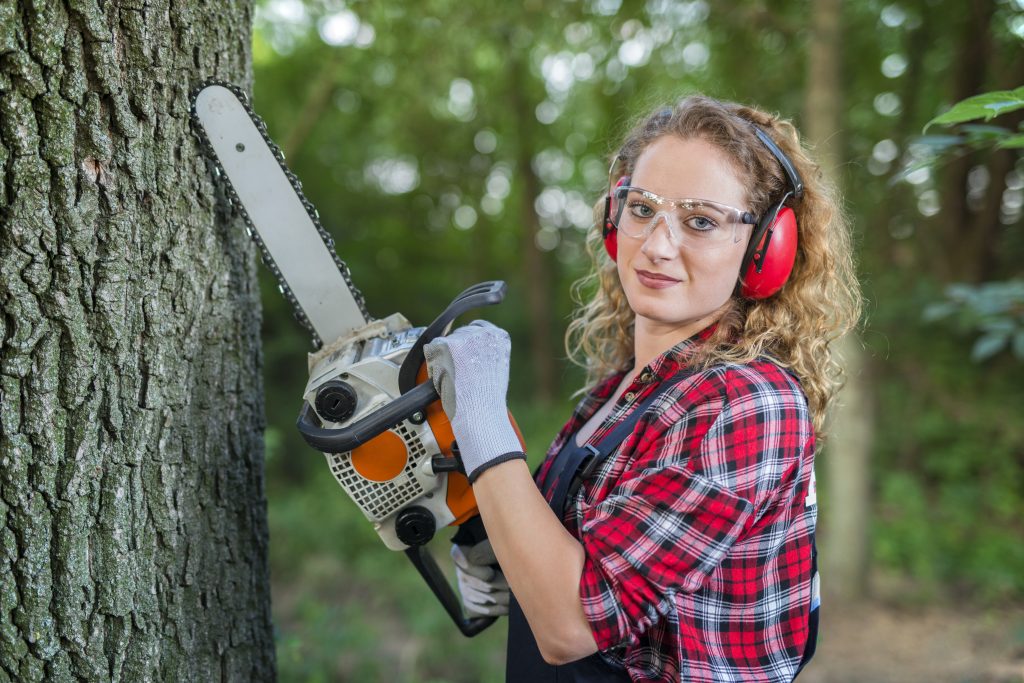
However, it is important to consider the pros and cons before proceeding with stump grinding and wood removal. On the positive side, it eliminates potential hazards and improves the appearance of your property. On the other hand, stump grinding can be a time-consuming and labor-intensive process, requiring specialized equipment and expertise. Additionally, the cost of hiring professionals for this task should be taken into account.
Lessons
When it comes to tree stump removal, replanting options, and soil restoration techniques, there are several important factors to consider. You need to decide on the most effective method for removing the tree stump, whether it’s through grinding, chemical treatment, or excavation. Once the stump is gone, you’ll have the opportunity to explore various replanting options, such as choosing a new tree or opting for a different type of landscaping. Lastly, it’s crucial to focus on soil restoration techniques to ensure the health and vitality of your new plants, including proper fertilization, mulching, and soil testing.
Tree Stump Removal
If you’re looking to remove a tree stump, it’s essential to consider hiring a professional to handle the task. Tree stump removal can be a complex and challenging process, requiring specialized tools and expertise. One popular method is tree stump grinding, where a professional uses a powerful machine to grind the stump down to below ground level. This method is effective and ensures that the stump is fully removed, allowing you to reclaim the space for other purposes. Another option is chemical tree stump removal, which involves applying chemicals to the stump to break it down over time. However, this method can be time-consuming and may not be suitable for all situations. Once the tree stump is removed, you can then explore different replanting options to enhance the beauty and functionality of your outdoor space.
Replanting Options
To enhance the beauty and functionality of your outdoor space, you can explore different replanting options once the tree stump has been removed. Replanting is an essential step in restoring the natural balance and aesthetics of your landscape. There are several tree replacement strategies you can consider, such as planting a new tree in the same spot or choosing a different species that better suits your needs and climate. When selecting a replacement tree, it is crucial to consider factors such as growth rate, size, and maintenance requirements. Additionally, you may also explore alternatives to traditional trees, such as shrubs, flowering plants, or even creating a garden bed. By carefully choosing the right replanting options, you can transform your outdoor space into a lush and vibrant environment. Moving forward to soil restoration techniques, you can ensure the health and vitality of your new plants.
Soil Restoration Techniques
You can improve the health and fertility of your soil by adding organic matter, such as compost or manure. Soil restoration methods play a crucial role in maintaining a sustainable and productive garden or landscape. Adding organic matter to your soil not only enhances its structure but also provides essential nutrients for plant growth. Compost and manure, rich in organic materials, help to replenish the soil’s organic content, improving its moisture retention and nutrient-holding capacity. These methods not only benefit your plants but also have a positive environmental impact. By incorporating organic matter into your soil, you reduce the need for chemical fertilizers and pesticides, thus minimizing the negative effects these products can have on the environment. Now that you understand the importance of soil restoration techniques, let’s move on to discussing routines {yt} that will further enhance the health of your soil.
Routines
After tree removal, it’s important to establish new routines for maintaining the area. Proper tree care and maintenance are crucial to ensure the health and longevity of the surrounding vegetation and landscape. By implementing a regular routine, you can address potential issues and prevent any further damage or hazards.
First, make it a habit to inspect the area for any signs of decay, disease, or pest infestations. Look for dead branches, discoloration, or unusual growth patterns. If you notice any problems, take immediate action to mitigate the risk and protect other trees and plants in the vicinity.
Next, focus on pruning and trimming. Regularly remove dead or damaged branches, as they can become a safety hazard during storms or high winds. Pruning also promotes healthy growth by allowing sunlight and air circulation to reach the remaining vegetation.
In addition to pruning, regularly fertilize the soil to provide essential nutrients for the surrounding plants. Use organic fertilizers specifically formulated for tree maintenance. This will help support healthy root development and overall growth.
Lastly, consider mulching the area. Mulch helps retain moisture, suppresses weed growth, and insulates the soil from extreme temperatures. Apply a layer of mulch around the base of the tree, making sure to avoid direct contact with the trunk.
Establishing these new routines for tree maintenance will ensure the health and beauty of the surrounding landscape. However, it’s important to weigh the pros and cons of each step to make informed decisions that are best suited for your specific situation.
Pros and Cons
After removing a tree from your property, it’s important to consider the pros and cons of what to do next. On one hand, the benefits of tree removal include eliminating potential hazards, reducing the risk of property damage, and clearing space for other landscaping projects. Additionally, removing a tree can improve sunlight exposure and ventilation to the surrounding area. However, there are also drawbacks to consider. For instance, the removal of a tree can have negative impacts on the ecosystem, such as disrupting animal habitats and reducing biodiversity. Furthermore, the loss of a tree can affect the aesthetic appeal of your landscape and decrease property value.
Before deciding on your next steps, weigh the pros and cons carefully. Consider the benefits of tree removal, such as increased safety and the opportunity to create a new landscape design. However, also take into account the potential drawbacks, including the impact on the environment and the loss of natural beauty. By carefully considering these factors, you can make an informed decision about what to do after tree removal.
Now, let’s move on to discussing the dos and don’ts when it comes to taking care of your property after tree removal.
Dos and Dont’s
When it comes to taking care of your property after tree removal, it’s important to follow these dos and don’ts. Proper care and maintenance can ensure the safety and beauty of your surroundings. Here are some guidelines to help you navigate this process:
| DOs | DONT’s | Common Mistakes |
|---|---|---|
| Remove tree debris promptly and safely | Do not neglect post-removal cleanup | Leaving tree stumps unattended |
| Consult a professional for stump grinding or removal | Avoid planting new trees too close to existing structures | Failing to assess potential hazards |
| Consider replanting to restore the aesthetic appeal | Do not overlook proper tree disposal methods | Ignoring necessary permits or regulations |
Mistakes to Avoid
One common mistake to avoid is neglecting post-removal cleanup. After a tree has been removed from your property, it is crucial to take proper care of the area to ensure a clean and safe environment. Many people make the error of assuming that once the tree is gone, their job is done. However, this is far from the truth. Proper post-removal care is essential for the health of your landscape and the overall appearance of your property.
One of the most common mistakes people make is leaving behind debris and tree stumps. Not only does this create an unsightly mess, but it can also pose a safety hazard. It is important to remove any remaining branches, twigs, and leaves from the area. Additionally, tree stumps should be ground down or removed entirely to prevent tripping hazards and potential regrowth.
Another mistake to avoid is failing to address the soil and root system of the removed tree. When a tree is removed, its root system remains in the ground, potentially causing problems for future landscaping projects. It is advisable to have the soil tested and treated if necessary, and to remove any remaining roots to prevent issues with drainage or new plantings.
In conclusion, taking proper care of your property after tree removal is crucial. Avoiding common mistakes such as neglecting post-removal cleanup can save you time, money, and potential headaches in the future.
Transition: Now that you know what mistakes to avoid, let’s delve into the key takeaways for ensuring a successful post-removal cleanup and care.
Key Takeaways
Now that you’re aware of the mistakes to avoid, let’s focus on the key takeaways for a successful post-removal cleanup and care. After a tree removal, it’s important to address the aftermath and ensure proper care to maintain the health and safety of your property. The first key takeaway is to clear the area thoroughly. Remove any debris, branches, or logs left behind to avoid tripping hazards or potential damage to your property. Next, inspect the surrounding soil for any damage caused by heavy machinery or root removal. If necessary, replenish the soil and consider adding mulch to promote healthy growth for any remaining trees or plants in the area. Additionally, it’s crucial to assess the impact on nearby structures and assess if any repairs or reinforcement are needed. Finally, don’t forget to schedule regular maintenance and check-ups to monitor the overall health of your landscape. By following these key takeaways for post tree removal care, you can ensure a successful cleanup and promote the long-term well-being of your property. Transitioning to the next section, let’s explore the specific action steps for tree removal.
Specific Action Steps for Tree Removal
When it comes to tree stump removal, there are several effective techniques available. One method is to grind the stump down using a stump grinder, which will reduce it to wood chips. Another option is to use chemicals to accelerate the decomposition process. After removing the stump, it’s important to restore the soil to ensure the successful growth of new plants or trees. This can be done by adding organic matter, such as compost or mulch, to improve soil fertility and structure. Finally, planting new trees in the area can help restore the beauty and ecosystem benefits that were lost with the removal of the old tree.
Tree Stump Removal
After tree removal, it’s important to consider stump removal as well. Tree stumps can be unsightly, pose a tripping hazard, and even attract pests. There are two main methods for removing tree stumps: tree stump grinding and chemical stump removal.
Tree stump grinding involves using a stump grinder to mechanically grind the stump down to below ground level. This method is quick and effective, but it does leave behind wood chips that will need to be cleaned up afterward.
Chemical stump removal, on the other hand, involves applying chemicals to the stump to accelerate its decomposition. While this method takes longer, it is less labor-intensive and leaves no residual wood chips.
Once the stump is removed, it’s important to transition into the subsequent section about soil restoration techniques. This will ensure that the area where the tree once stood can be properly prepared for future landscaping or planting.
Soil Restoration Techniques
To properly restore the soil in your landscaping area, you’ll want to consider techniques such as adding organic matter, conducting soil tests, and implementing proper drainage systems. Soil erosion prevention is crucial for maintaining a healthy landscape, and one effective method is organic composting. By adding organic matter, such as compost or decomposed leaves, to your soil, you can improve its structure, nutrient content, and water-holding capacity. Additionally, conducting soil tests will help you understand the specific needs and deficiencies of your soil, allowing you to make targeted amendments. Implementing proper drainage systems, such as French drains or swales, will prevent excess water from pooling and causing erosion. By following these techniques, you can restore your soil and create a solid foundation for planting new trees in your landscape.
Planting New Trees
Planting new trees can be a rewarding experience that adds beauty and provides shade to your landscape. When it comes to replanting strategies, there are a few things to consider. First, assess the site conditions to ensure the new tree will thrive. Consider factors such as soil type, sunlight exposure, and drainage. Next, select the right tree species for your specific location. Research the tree’s growth requirements, such as soil pH and moisture levels, to ensure compatibility with your landscape. It is also important to consider the mature size of the tree to avoid future conflicts with nearby structures or power lines. When planting, dig a hole that is wide and shallow, allowing room for the roots to spread. After planting, water the tree thoroughly and apply mulch around the base to conserve moisture and deter weeds. Following these replanting strategies and careful tree species selection will help ensure the success and longevity of your new trees.
Frequently Asked Questions
How Much Does Tree Removal Typically Cost?
Tree removal costs vary depending on factors such as the size of the tree, location, and difficulty of the job. It’s important to consider tree removal insurance to protect against any potential damages or accidents.
What Permits or Permissions Are Needed for Tree Removal?
After tree removal, it’s crucial to consider permits and permissions required in the tree removal process. Hiring professional tree removal services ensures proper handling, disposal, and compliance with regulations, emphasizing the importance of professional expertise.
Can I Replant a Tree in the Same Spot After Removal?
After tree removal, you can replant a tree in the same spot. However, there are important considerations to keep in mind. Replanting can impact soil quality, so it’s crucial to assess and amend the soil before planting again.
How Long Does It Take for a Tree Stump to Decompose?
After tree removal, you may be wondering how long it takes for a tree stump to decompose. There are various tree stump removal techniques and natural methods that can speed up this process.
Are There Any Alternatives to Complete Tree Removal?
If considering alternatives to tree removal, explore tree preservation. This practice offers numerous benefits, such as maintaining the aesthetic appeal, providing shade, improving air quality, and supporting local ecosystems.
About Murray, Utah
Murray is a city situated on the Wasatch Front in the core of Salt Lake Valley in the U.S. state of Utah. Named for territorial governor Eli Murray, it is the state's fourteenth largest city. According to the 2020 census, Murray had a population of 50,637. Murray shares borders with Taylorsville, Holladay, South Salt Lake and West Jordan, Utah. Once teeming with heavy industry, Murray's industrial sector now has little trace and has been replaced by major mercantile sectors. Known for its central location in Salt Lake County, Murray has been called the Hub of Salt Lake County. Unlike most of its neighboring communities, Murray operates its own police, fire, power, water, library, and parks and recreation departments and has its own school district. While maintaining many of its own services, Murray has one of the lowest city tax rates in the state.
Neighborhoods in Murray, Utah
Murray Oakes, Grant Park, Southwood Park, Murray Park, Murray Park Restrooms, Willow Pond Park, Neighborhood Veterinary Care
Things To Do in Murray, Utah
Bus Stops in Murray, Utah to Truco Services, Inc.
Bus Stop in Murray Central Station (Bay C) Murray, Utah to Truco Services, Inc.
Bus Stop in State St @ 4801 S Murray, Utah to Truco Services, Inc.
Bus Stop in Murray North Station Murray, Utah to Truco Services, Inc.
Bus Stop in State St @ 4949 S Murray, Utah to Truco Services, Inc.
Bus Stop in Murray Central Frontrunner/Trax Station Murray, Utah to Truco Services, Inc.
Bus Stop in Murray Blvd / Vine St (SB) Murray, Utah to Truco Services, Inc.
Bus Stop in State St @ 3925 S Murray, Utah to Truco Services, Inc.
Bus Stop in State St @ 4824 S Murray, Utah to Truco Services, Inc.
Bus Stop in State St @ 5223 S Murray, Utah to Truco Services, Inc.
Bus Stop in Murray Blvd / Allendale Dr (NB) Murray, Utah to Truco Services, Inc.
Bus Stop in Murray Blvd @ 5039 S Murray, Utah to Truco Services, Inc.
Bus Stop in State St @ 4721 S Murray, Utah to Truco Services, Inc.
Driving Directions in Murray, Utah to Truco Services, Inc.
Driving Directions from Woodruff Tree Trimming and Removal to 4640 Commerce Dr, Murray, UT 84107, USA
Driving Directions from Reliable Tree Care to 4640 Commerce Dr, Murray, UT 84107, USA
Driving Directions from Tree Pro-Tech to 4640 Commerce Dr, Murray, UT 84107, USA
Driving Directions from Prestige Tree And Landscape to 4640 Commerce Dr, Murray, UT 84107, USA
Driving Directions from Excellence Tree & Landscape to 4640 Commerce Dr, Murray, UT 84107, USA
Driving Directions from Amen Trees to 4640 Commerce Dr, Murray, UT 84107, USA
Driving Directions from Tim's Tree Care to 4640 Commerce Dr, Murray, UT 84107, USA
Driving Directions from Jordan Tree Service - Murray to 4640 Commerce Dr, Murray, UT 84107, USA
Driving Directions from Arbor Works to 4640 Commerce Dr, Murray, UT 84107, USA
Driving Directions from Diamond Tree Experts to 4640 Commerce Dr, Murray, UT 84107, USA
Driving Directions from Green Tree Arborist to 4640 Commerce Dr, Murray, UT 84107, USA
Driving Directions from TruCo Services to 4640 Commerce Dr, Murray, UT 84107, USA
Reviews for Truco Services, Inc. Murray, Utah
Emily Abercrombie
We had a great experience with TruCo! They were well priced, responsive and prompt. Michael was a pleasure to work with and gave us advice on which plants to put in where we took out our ugly old shrubs. I would highly recommend this company!!!
Michelle Turpin
TruCo Services gets 5 stars from us for customer service. We experienced a few issues with their services this last year and Rob Eccles in senior management, stepped in and immediately handled our issues. He was very committed to making sure they understood our expectations and would execute to make us happy.
Siobhan Billingsley
I work for a property management company and have the pleasure of working with Rob at a community in Sandy. He has been incredible to work with and always responds in a timely manner. He knows all the homeowners by name and address and is aware of all the "problem" areas when it comes to sprinklers. I never have to worry about following up with him because he always reaches out to provide me with an update. If you're looking to work with someone who takes pride in their job, is professional, and can solve the worst landscaping problems thrown your way, Rob is your guy. Thank you, Rob for all you do!
Jaime S.
We have used Truco at 2 of the complexes we manage, they have been great to work with. Good quality service, outstanding customer service with good communication. That's hard to find these days. I highly recommend them. Travis has been awesome to work with.
Jerusha Smart
We use TruCo for a majority of our properties and our home. While other landscaping companies we use come and go for various reasons like cost, communication issues, work performance, etc., TruCo is always consistent in price and work. Also, Rob is the best.
